How to Make Rice Water (Rice Starch Water)
Lean how to make rice water (rice starch water) and its benefits. Rice water is widely used as a beauty and hair treatment in Korea. Due to its starch component, it is also used as a natural thickener in Korean cuisine.
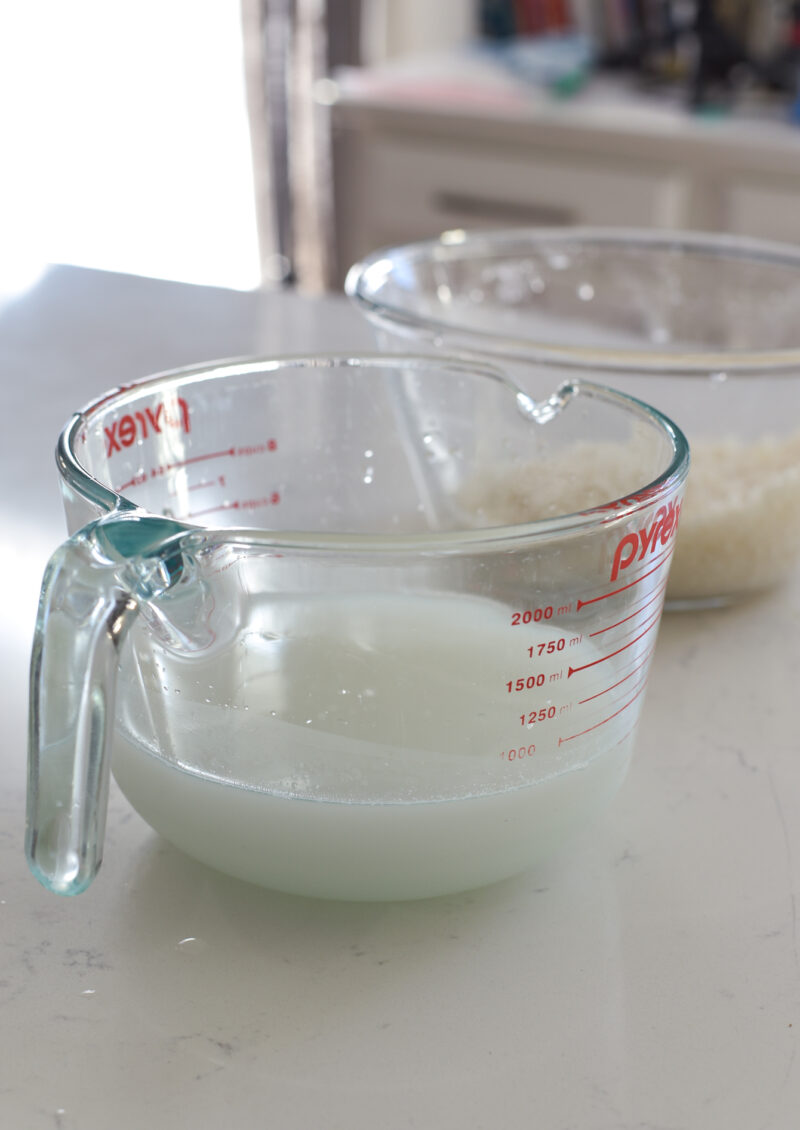
Rice water in Korean cooking
Occasionally you may find an interesting ingredient called “rice starch water (ssal-tte-mul, 쌀뜨물)”, or some calls it rice water, in my Korean soup or stew recipes, such as in Doenjang Jjigae.
Rice water is basically the water that you used to rinse the rice. Due to its starch component, it is often used as a natural thickener in stews or other dishes. It also adds depth to the flavor of the dish.
Not only as a thickener, rice water also helps get rid of fish odor. I can’t explain scientifically how rice starch water reduces fish odor, but many Koreans use it to treat the fish smell.
For example, see my Braised Mackerel and Radish recipe to learn more.
Rice water for hair
Besides using in cooking, rice water widely known for its benefit to condition beautiful hair.
Rice water has been used in Korea as a traditional beauty treatment for centuries. The amino acid in rice water repair the damaged hair and support hair regeneration decreasing the hair fall and promote hair growth.
Rinsing hair with rice water helps providing the hair volume. It makes the hair strong, shiny, and smooth. It also prevents the dandruff and brings inflammatory effects on your scalp.
Other benefits of rice water
- Anti-aging for your skin: Rice water contains antioxidant substances known to sooth and tone your skin and improve your skin condition. It can slow down the signs of aging, brings a skin brightening effect.
- Mild fertilizer for your garden: rice water can also be used as fertilizers to increase crop production and for the healthy growth of plants. It contains essential nutrients needed by all plants promoting the growth at a much better rate.
How to make rice water
A good news is that you can easily and inexpensively make rice water at home.
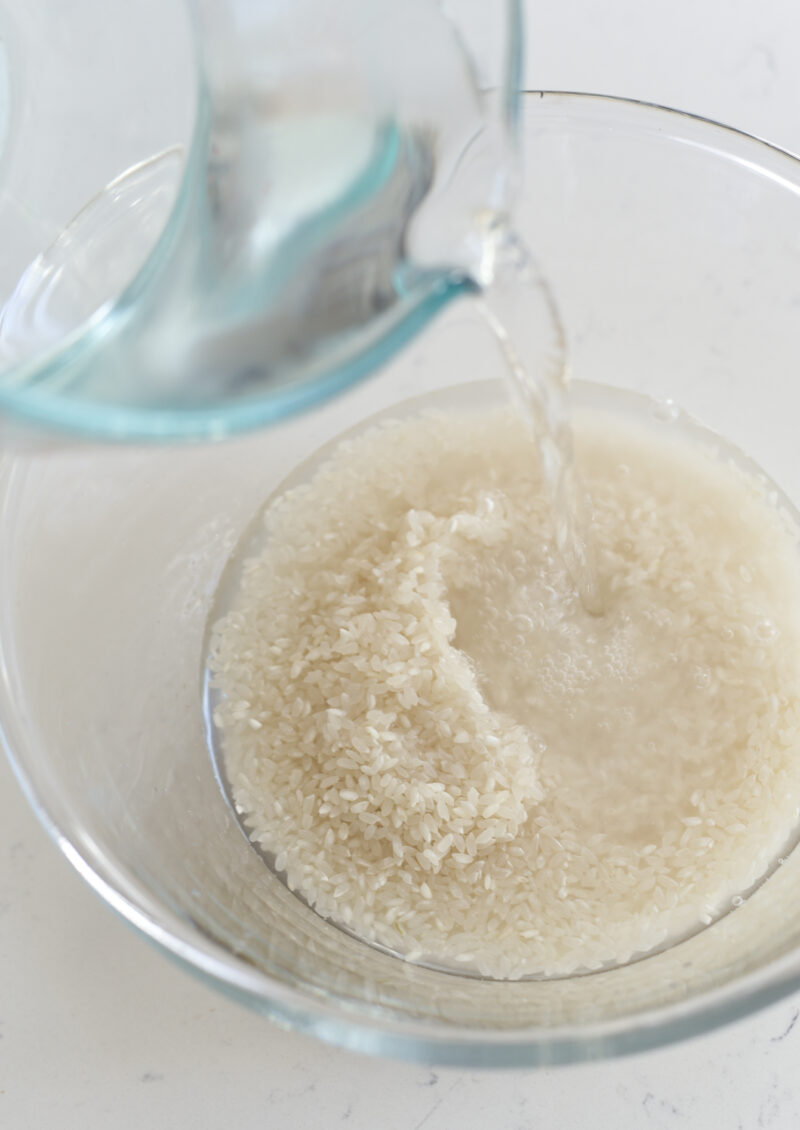
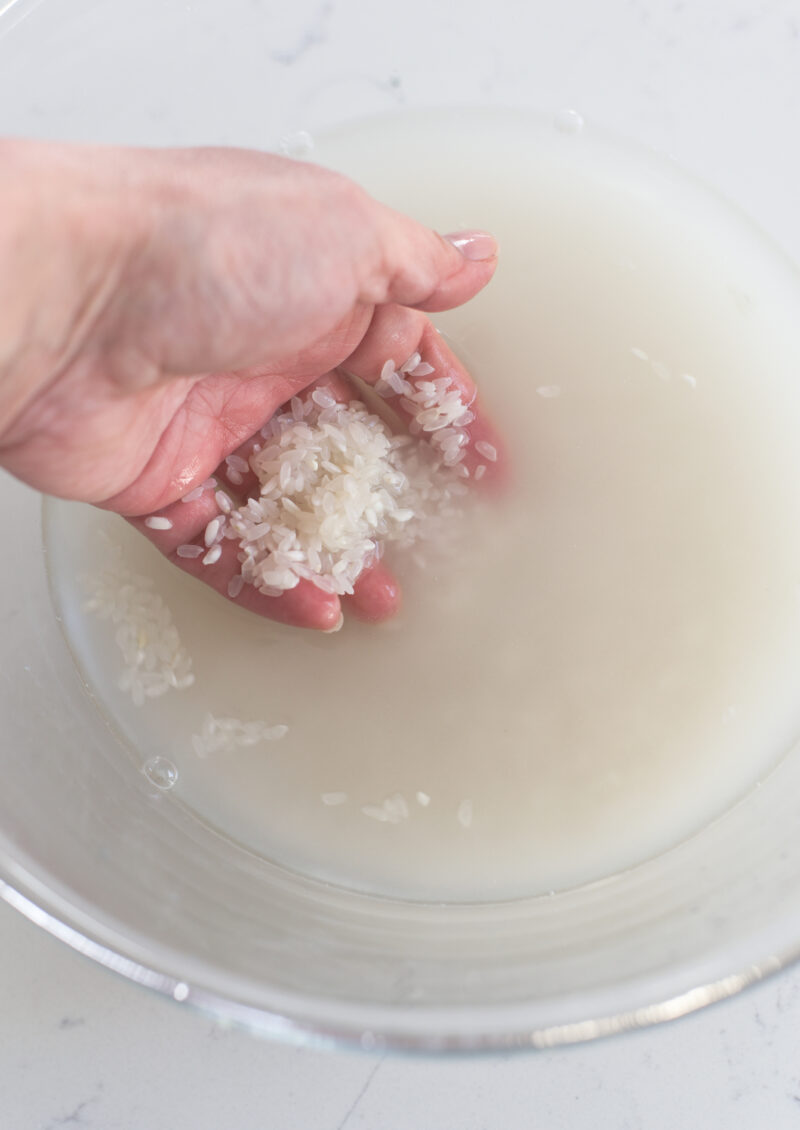
- Pour some water over uncooked rice in a bowl.
- Run your fingers through the rice a couple times to rinse the rice, then drain the water. Discard this first rinsed water.
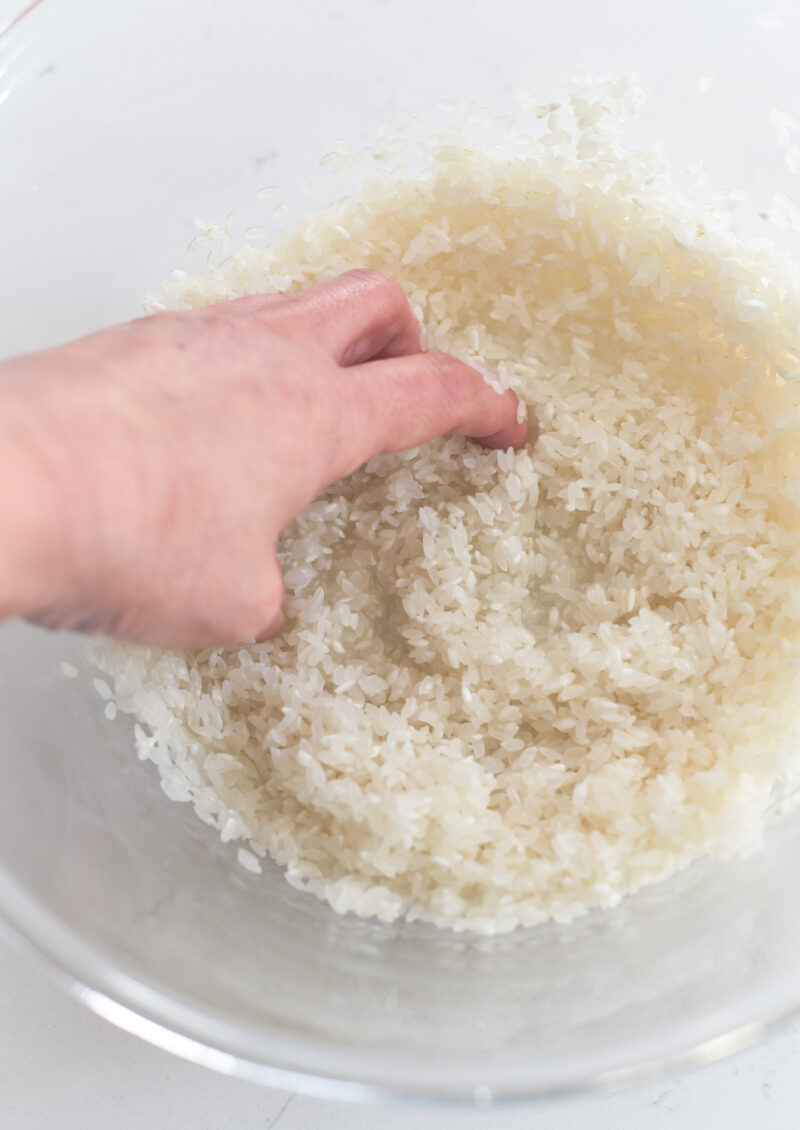
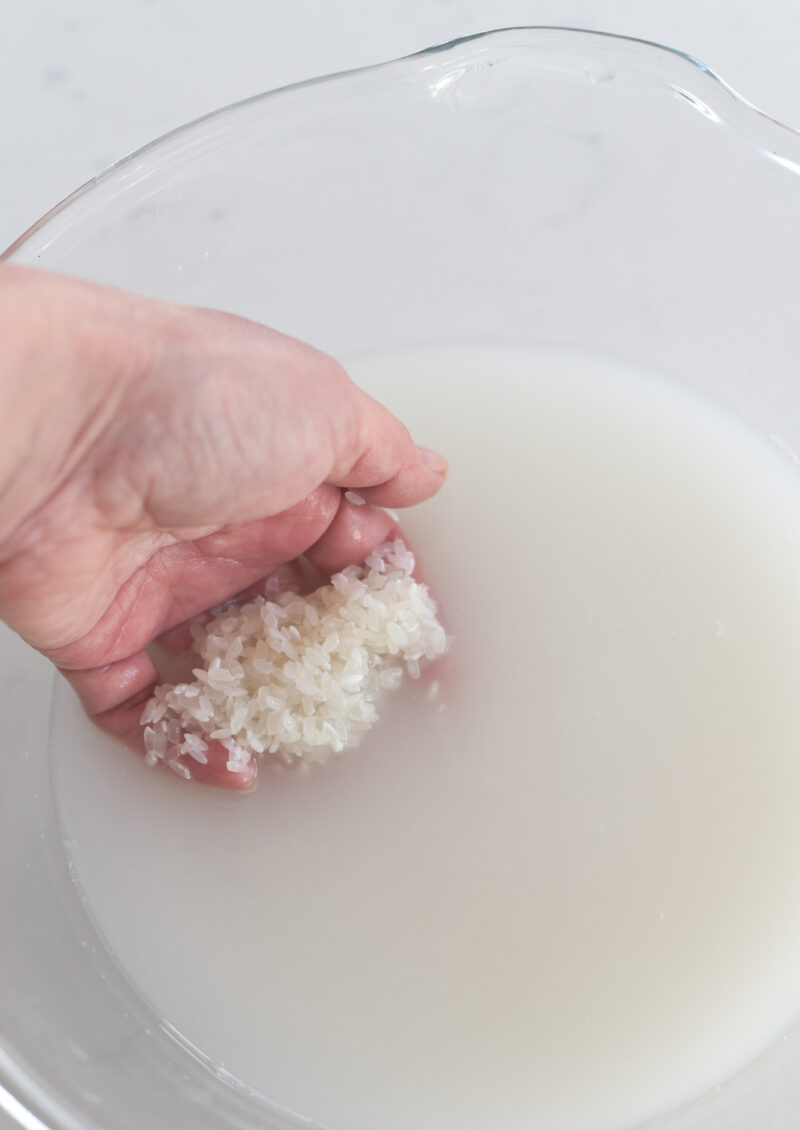
- Swirl the rice around for 15 seconds vigorously with your fingers to loosen the starch coating on the rice grains.
- Add the amount of water the recipe needs (or triple the volume of your rice) and rinse the rice. You will see the water turn milky. This is your rice water that you will need to reserve.
- Pour the second rinsed water into another bowl and reserve it for your cooking needs.
- Continue to rinse your rice a couple more times before cooking it by your usual rice cooking method.
NOTE: Rice starch water can be stored in the refrigerator up to a week. The starch will settle to the bottom, so shake it before you use it.
Recipes Using Rice Water
- Korean Soybean Paste Soup With Beef And Watercress
- Beef and Bean Sprout Soybean Paste Stew
- Beef Doenjang Jjigae, Korean soy bean paste stew with beef
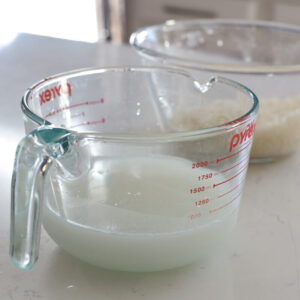
How to make rice water (rice starch water)
Ingredients
- 1 1/2 cup rice
- about 3 cup water, to rinse off
- 4 cup water, to reserve
Instructions
- Pour some water (about 3 cup) over uncooked rice in a bowl. Run your fingers through the rice a couple times to rinse the rice, then drain the water. Discard this first rinsed water.
- Swirl the rice around for 15 seconds with your fingers to loosen the starch coating on the rice grains.
- Add the amount of water the recipe needs (or about 4 cups)and rinse the rice. You will see the water turning milky. This is your rice water that you will need to reserve.
- Pour the second rinsed water (rice water) into another bowl and reserve it for your cooking or beauty needs.
- Continue to rinse your rice a couple more times before cooking it by your usual rice cooking method.

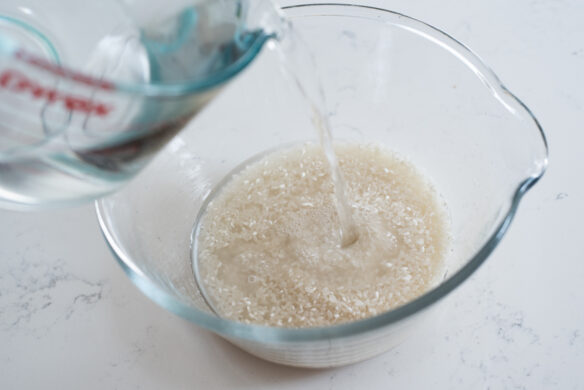
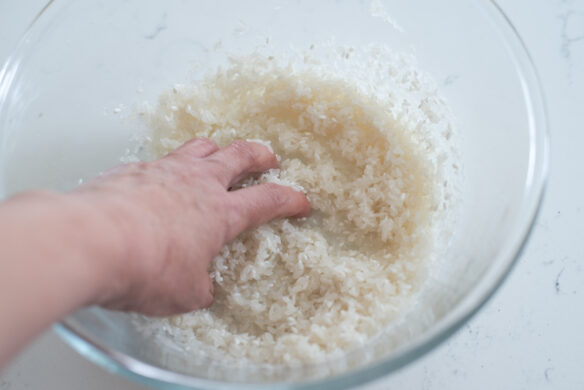
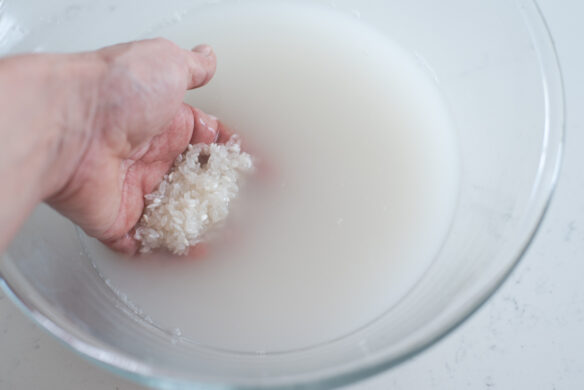
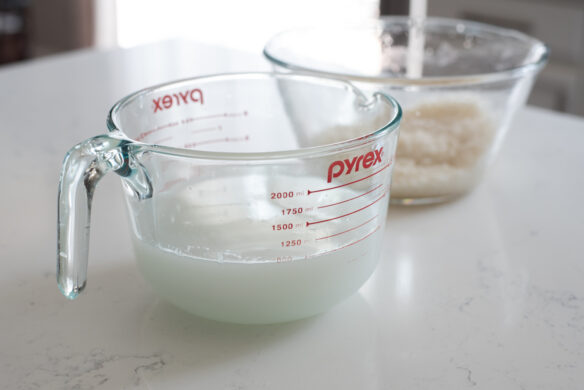
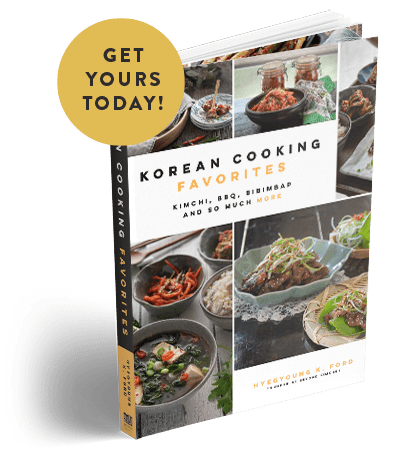
What are the physical properties of this starch?
Rice starch water is a cloudy liquid with a slightly thicker consistency than water, a mild scent, and a bland taste. It’s denser than water due to the suspended starch particles.
When the starch settles at the bottom of the bottle, can I drain the excess water?
I want to have a very concentrated liquid. It won’t affect it the starch right?
Hi Idia
Yes, you can drain the excess water on top to get the concentrated starch on the bottom.
What kind of rice do you recommend for stews like doenjang jiggae? Glutinous short grain white rice? Some of them say “sweet sticky rice”, is that variety used only for desserts and rice cakes or is it the same kind served with savory food? Thanks for clarifying!
Hi Sharon
To make rice water as a soup base, you can use any type of rice because you are just getting the starch coating off and dilute with water.
But for making a specific dish with rice grain, regular short grain rice and sweet sticky rice are used differently.
Sweet sticky rice is widely used for desserts and rice cakes, but it also can be used in savory dishes where it requires lots of stickiness to form a shape together. Regular short grain is mostly for making plain rice to serve with main dishes as a side dish. However, the flour of short grain rice is widely used in making rice cakes (tteok).
When you are making fried rice, use regular short grain rice, not the sweet sticky rice. When you need to make a molded shape of dessert or dish, sweet sticky rice is ideal.
Often people add a little bit of sweet sticky rice to regular short grain rice to increases the sticky factor of savory dishes. When you make Korean porridge, you can use either rice type depending on the texture you desire. Some like to mix both rice together.
Hope this helps.
Such a useful recipe! Neat. Thanks!
I use it to wash my hair 🙂 Didn’t know that you can use this in Korean cooking.